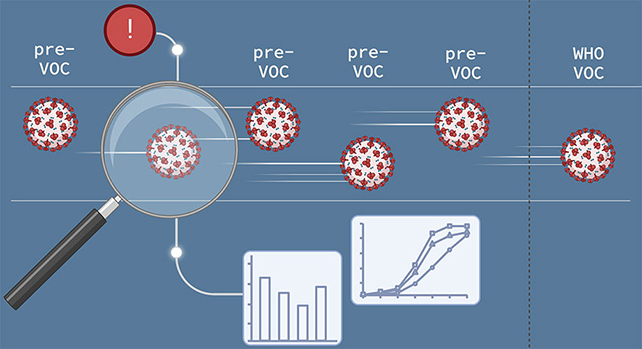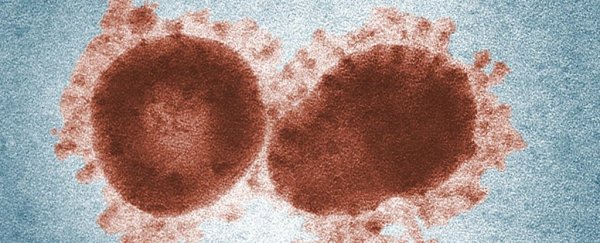The global COVID-19 pandemic has shown us just how devastating these outbreaks can be – and it could have been much worse. Now, scientists have developed an AI application that promises to warn us about dangerous variants in future pandemics.
It's called the early warning anomaly detection (EWAD) system, and when tested against actual data from the spread of SARS-CoV-2, it was accurate in predicting which new variants of concern (VOCs) would emerge as the virus mutated.
Scientists from Scripps Research and Northwestern University in the US used a machine learning method to produce EWAD. In machine learning, vast amounts of training data are analyzed by computers to spot patterns, develop algorithms, and then make predictions about how those patterns may play out in future, unknown scenarios.

In this case, the AI was fed information about the genetic sequences of SARS-CoV-2 variants as infections spread, how frequent those variants were, and the reported global mortality rate from COVID-19. The software could then spot genetic shifts as the virus adapted, usually shown in increasing infection rates and falling mortality rates.
"We could see key gene variants appearing and becoming more prevalent, as the mortality rate also changed, and all this was happening weeks before the VOCs containing these variants were officially designated by the WHO," says William Balch, a microbiologist at Scripps Research.
The specific technique used here by the team is called Gaussian process-based spatial covariance, which essentially crunches the numbers on a set of existing data to predict new data – using not just the averages of the data points but also the relationships between them.
By testing their model on something that's already happened and finding close matches between the real and the predicted data, the scientists could prove EWAD's effectiveness at predicting how measures such as vaccines and mask-wearing could cause a virus to continue evolving.
"One of the big lessons of this work is that it is important to take into account not just a few prominent variants, but also the tens of thousands of other undesignated variants, which we call the 'variant dark matter,'" says Balch.
The researchers say their AI algorithms were able to spot "rules" of virus evolution that would otherwise have gone undetected, and that could prove vital in combating future pandemics as they emerge.
Not only that, but the system developed here could also enable scientists to understand more about the very basics of virus biology. That could then be used to improve treatments and other public health measures.
"This system and its underlying technical methods have many possible future applications," says mathemologist Ben Calverley from Scripps Research.
The research has been published in Cell Patterns.
